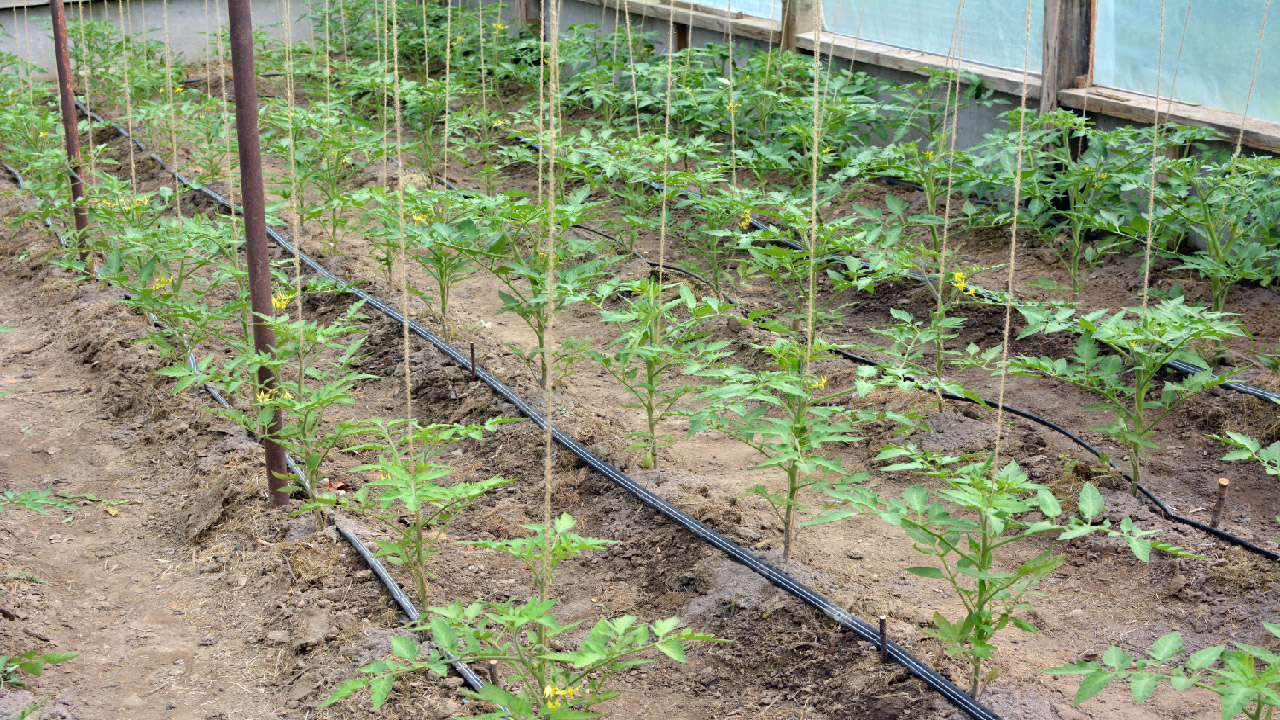The Benefits of Drip Irrigation
Jan 7th 2020
Why are so many gardeners and farmers turning to drip irrigation? There are many reasons, including water conservation as well as saving time, money and hassles.
But how does drip irrigation work and what is drip irrigation anyway? Read on for answers about this efficient watering method and how it can help you with your plants.
Drip irrigation simply involves slowly delivering water to plants at ground level rather than watering from above by hand, with sprayers or with other overhead irrigation methods. It is not to be confused with soaker irrigation.
What is the difference of drip irrigation vs. soaker hoses? Soaker hoses are porous, so water seeps out through their entire length. Drip irrigation systems use emitter tubes attached to a long tube. Water drips out of each emitter tube at a more precise location, giving you more control over watering. See our videos of drip irrigation for examples.
Water Effectively: Drip Irrigation is the most efficient method of watering today.
- Places a precise amount of water where you need it
- Prevents overwatering
- Results in less weeding
- Conserves water
- Saves money
Time-Saving: Installing a drip system will not only save you water, but time.
- Eliminate hours of hand-watering
- Can be fully automated with a timer
- Reduces or eliminates weeding
Money-Saving: Drip systems inherently water directly to the roots of the plants.
- Drip irrigation uses 30 to 50% less water
- In one to two seasons, you can make back the cost of purchasing the system
- Your utility (water) bill will be lower with less water loss to evaporation
- Drip irrigation components will last many years with proper planning
Versatility: Drip irrigation systems can be used just about anywhere.
- Gardens, vineyards, greenhouses and row crops
- Existing or new landscapes
- Hillsides or flat terrain
- Long-lasting and adaptable
- Fertilizer can be fed to the plants while the system is running with a fertilizer injector
Plant Health: Drip irrigation puts water at the base of the plants rather on the leaves
- Helps prevent mildew on leaves
- Minimizes diseases that can grow and spread on wet leaves
- Reduces evaporation of water droplets in the air
Drip irrigation is used on farms both large and small, in vineyards, home gardens and nurseries as well as urban balconies, rooftops and decks all over the world. When DripWorks began selling drip irrigation products back in 1992, people were spraying valuable water into the wind or flood-irrigating with uneven results.
Now with water supplies dwindling and the cost of water going up, the demand for and popularity of drip irrigation has boomed. Governments locally and around the world need to ensure sustainable, efficient and equitable management of scarce water resources. Here are some simple ways you can help:
- You can save water and time when you landscape and garden with drought-tolerant native shrubs and trees when possible. These plants have naturally adapted to your local environment and will require less care, watering and fertilizing over time. By using as many native plants as possible, you can minimize plantings that require a lot of attention. In a few years, these native plants won’t require watering.
- Even better, entirely replace your lawn with hardscape (large rock), wood chips or small rounded stones around your native trees and shrubs. Maintaining a lawn takes a lot of time, money and water. Running a lawn mower, weeding and fertilizing will become a thing of the past. Exposure to chemical fertilizer, gas fumes and noise will be abated. Your utility bill will be lowered, directly reflecting this change.
- An efficient drip system will save you up to 50% on your water bill in vegetable and ornamental gardens as well as orchards. Check out DripWorks.com for assistance.
- Use a thick layer of mulch on the ground around trees and shrubs to hold in the moisture underneath. Mulch is available in many forms, including wood chips, ground bark, small stone or a thick layer of leaves. When you put down this protective layer, it will reduce weed growth, improve the fertility and health of the soil, add beauty to your landscape and save water.
- Set timers to water before 10 a.m. and after 4 p.m. to reduce the amount of evaporation.
- Make sure your dishwasher and washing machines are full before running a cycle. This will save electricity as well as water.
- In and around the house, take shorter showers. If you really want to save water, take “Navy showers.” Turn on the shower to get wet. Then turn off the water and lather up. Turn on the water again and rinse off.
- When taking care of your home outdoors, use brooms instead of water hoses to clean walkways.

